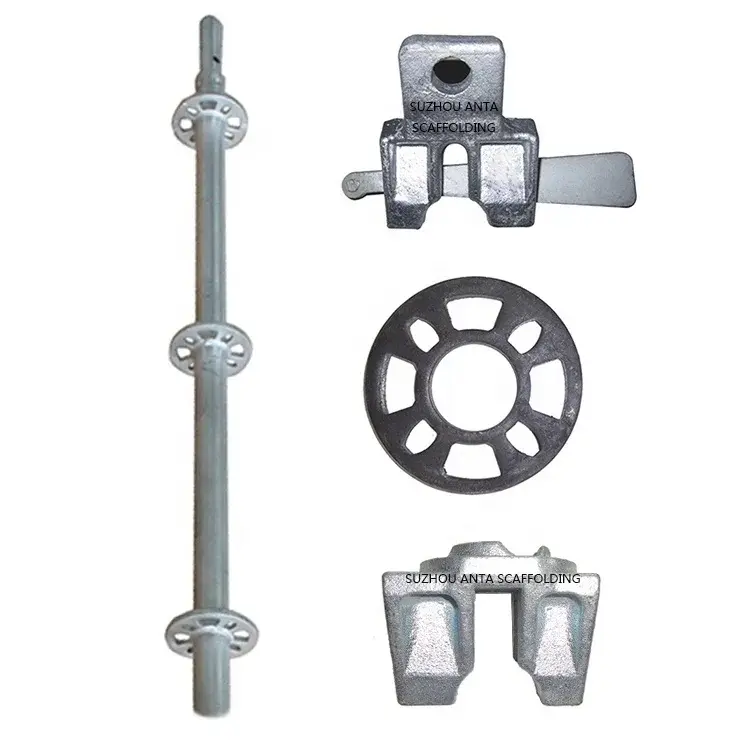Pressed Scaffolding Couplers: A Complete Guide
When it comes to constructing safe and sturdy scaffolding systems, one of the key components to consider is the use of scaffolding couplers. Pressed scaffolding couplers are a popular choice in the construction industry due to their ease of use, durability, and versatility. In this complete guide, we will explore everything you need to know about pressed scaffolding couplers, from their different types to their installation and maintenance.
Types of Pressed Scaffolding Couplers

Pressed scaffolding couplers come in various types, each designed for specific purposes in the scaffolding system. The most common types include swivel couplers, double couplers, sleeve couplers, and beam clamps. Swivel couplers are used to join two scaffold tubes at any angle, making them ideal for corner connections or where an adjustable angle is required. Double couplers are used to connect two scaffold tubes at right angles, providing a strong and stable joint. Sleeve couplers are used to extend scaffold tubes, allowing for greater reach and versatility in the scaffolding system. Beam clamps are used to attach scaffold tubes to steel beams or other structural members, providing a secure connection.
Installation of Pressed Scaffolding Couplers
Installing pressed scaffolding couplers is a straightforward process that requires attention to detail and proper equipment. To install a pressed scaffolding coupler, first, ensure that the scaffold tubes are clean and free from debris. Then, place the coupler over the ends of the tubes and tighten the bolts using a ratchet wrench or a scaffold spanner. It is important to tighten the bolts securely to ensure a strong and stable joint. Once the couplers are installed, check for any signs of movement or loosening and re-tighten if necessary. Always follow the manufacturer's guidelines for proper installation to ensure the safety and stability of the scaffolding system.
Maintenance of Pressed Scaffolding Couplers
Regular maintenance of pressed scaffolding couplers is essential to ensure the safety and longevity of the scaffolding system. Inspect the couplers regularly for any signs of wear, corrosion, or damage. If any issues are found, replace the couplers immediately to prevent any accidents or structural failures. It is also important to clean the couplers regularly to remove dirt, grime, and other debris that can affect their performance. Use a solvent or degreaser to clean the couplers thoroughly and lubricate the bolts to prevent rust and corrosion. By maintaining the couplers properly, you can extend their lifespan and ensure the safety of the scaffolding system.
Benefits of Pressed Scaffolding Couplers
Pressed scaffolding couplers offer several benefits that make them a preferred choice for construction projects. One of the main advantages of pressed couplers is their ease of use and installation, requiring minimal tools and expertise. They are also highly durable and can withstand heavy loads, providing a safe and secure connection for the scaffold tubes. Pressed couplers are versatile and can be used in various configurations to suit different project requirements. They are also cost-effective, compared to other types of scaffold couplers, making them an economical choice for construction companies.
Considerations When Using Pressed Scaffolding Couplers
While pressed scaffolding couplers are a reliable choice for construction projects, there are some considerations to keep in mind when using them. It is important to use the right type of coupler for the specific application to ensure a secure connection. Avoid overloading the couplers beyond their recommended load capacity to prevent accidents or structural failures. Inspect the couplers regularly for any signs of wear or damage and replace them as needed. Always follow the manufacturer's guidelines for installation and use to maintain the safety and stability of the scaffolding system.
In conclusion, pressed scaffolding couplers are an essential component of any scaffolding system, providing a strong and secure connection between scaffold tubes. By understanding the different types of pressed couplers, their installation and maintenance requirements, and the benefits they offer, construction professionals can ensure the safety and reliability of their scaffolding systems. Remember to follow proper installation procedures, conduct regular maintenance checks, and use the couplers correctly to maximize their lifespan and performance. With the right knowledge and care, pressed scaffolding couplers can help you build safe and sturdy structures for your construction projects.

